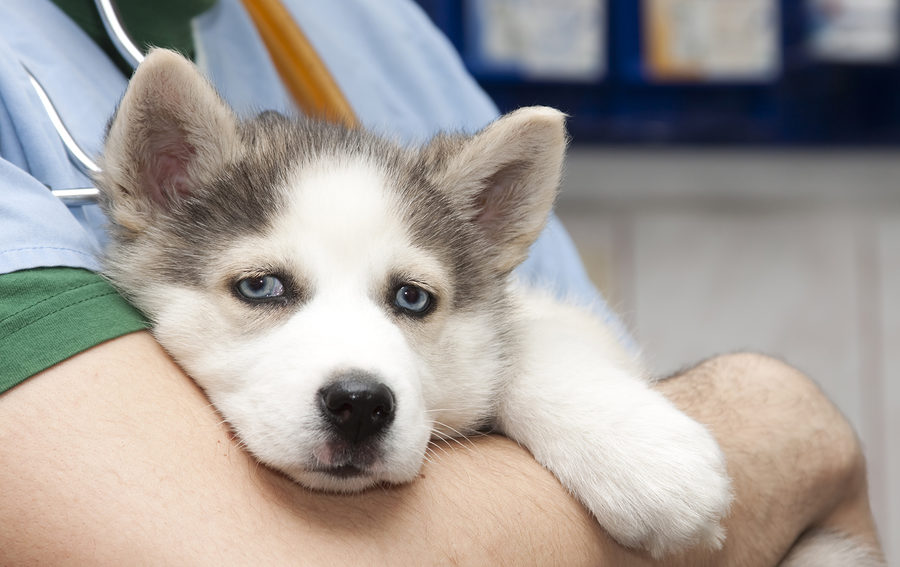Do you have a fear of going to the doctor or the dentist? How does that make you feel? Or perhaps you know someone who gets anxious just thinking about going to the doctor or dentist? Your pet may feel the same way about going to the veterinary clinic.
If your dog shakes, pants, acts restless, or will not take treats from the veterinary team while being examined, he may be experiencing the same kind of anxiety. If your cat does not want to come out of her carrier, hisses or tries to jump off the table when being examined, she may also be experiencing anxiety. It is important to know that when your pet shows these behaviors, they are not misbehaving but it is their way of saying that they are fearful, anxious, and stressed (abbreviated FAS). They are acting this way because they feel threatened.
This is a natural response and is quite common, as going to a veterinary clinic can be as stressful for your pet as going to the dentist is for you. Why is it so stressful? It is because your pet perceives the different sounds and smells of a veterinary clinic, along with seeing other animals and new people, as alarming or dangerous. If you are taking your pet to a Fear Free practice, you will notice that they do things differently. They will offer your pet treats. You may hear soft music playing. The veterinarian may sit on floor to examine your dog or examine your cat in their carrier. These actions are meant to reduce your pet’s level of FAS. In some cases, despite the veterinary team’s efforts to reduce FAS, your pet may be still be fearful, anxious, and stressed and may require a medication to calm them so that the examination or procedures can be completed with minimal stress to your pet.
Why would a dog or cat require medications to calm them?
When dogs and cats are showing signs of FAS, they are not only frightened, but they are also having a negative experience. In other words, they are having a bad day! Recognizing the signs of FAS early, and giving calming medications to reduce FAS, will benefit your pet by allowing them to have a better experience. Because they are calm, they will not struggle and the veterinary team will be able to complete the examination, clip their nails, treat an infected ear, or other types of procedures. Providing a positive experience is in the best interest of your pet. An additional bonus: The memory of a positive experience for one visit may allow the next visit to be less scary and stressful for your pet.
What kinds of situation would in-clinic administration of calming medications be required?
- If the dog or cat has a high level of FAS from the beginning of the visit, despite all efforts by the veterinary team to calm the pet.
- If the dog or cat was initially calm, but the level of FAS increases during the examination or procedure.
- If a diagnostic or treatment procedure may be stressful to the pet, such as taking an X-ray, getting a blood sample or clipping nails.
- If the diagnostic or treatment procedure such as cleaning infected ears or shaving an area of the skin that is infected, is expected to be painful, medications to reduce pain, known as analgesics, will also be administered with the calming medications.
What types of medications are used?
If you are anxious and stressed going to your dentist, you may have been prescribed an anti-anxiety medication. Similarly, your pet with FAS will receive an anti-anxiety medication to calm them. Some of these medications are used in people and some of these medications have also been developed specifically for dogs and/or cats. There are several different medications available, so your veterinarian will decide the right medication for your pet. These medications are generally safe and well tolerated.
What to expect after you pet has been given a calming medication?
Depending upon the types of medications used, they may return to their regular routine and act normally, once they get home. With other medications, you may notice that once your pet is at home, they may be a little sleepy. Since most of these medications have a short duration of action, your pet should be back to their normal routine within a few hours. They will usually eat a small meal and you can take them for a leash walk. It is best if you do not let them outside by themselves until the following day. Your veterinarian will provide specific instruction for what to do once you return home with your pet.
What questions should you ask your veterinarian if your pet requires calming medications to be given in the clinic?
- Will the procedure will be painful? Will your pet receive medications to control the pain?
- How long will the medication last? How alert will your pet will be when you bring them home?
- Are there any special precautions you need to take once your pet is home? When should you feed them, take them for a walk, etc.?
- What signs would your pet show that would be abnormal or necessitate a reason to call or bring your pet into the clinic?
___________________________________________________________________________________
Conclusion: Medications given in the clinic to calm your pet are often necessary for pets that are showing a moderate to high level of FAS or if the diagnostic or treatment procedures will be stressful. These medications are beneficial to keep you pet calm for the current visit and may make the next visit easier for your pet.
This article was reviewed/edited by board-certified veterinary behaviorist Dr. Kenneth Martin and/or veterinary technician specialist in behavior Debbie Martin, LVT.

This article is brought to you in collaboration with our friends at Zoetis Petcare. NA 02155R1








